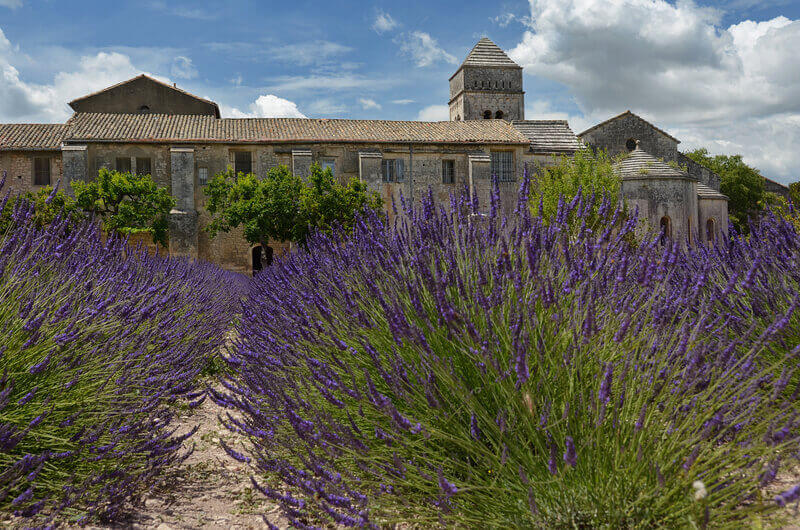Irises, 1889 by Vincent Van Gogh

In 1889 Van Gogh entered Saint-Paulde-Mausole, an asylum at Saint-Remy, originally a 12th-century Augustinian monastery, some twenty kilometers north of Aries. To Van Gogh, Saint-Paul-de-Mausole was an asylum, monastery and studio all in one, which was why he so gladly opted for the isolation. Isolation was what he wanted; the ascetic in van Gogh could indulge in whatever mortification he pleased, and the painter, playing the part of a patient, was in a place that supposedly sought to encourage art. In the medieval world, monasteries had been the true home of images,- and the modern age was fascinated by the metaphor of life in a cell as an aid to artistic creativity. "Nature", Nietzsche once wrote, "entraps the genius in a prison and stimulates his wish to break free to the utmost." Doing without the stimuli of everyday reality was of course an excellent way of paying what one owed: van Gogh's mode of payment was his detention itself rather than madness. His bouts of mental instability reinforced his resolve to turn his back on the world. Indeed, they were to make communication with the world beyond impossible for him.
In the asylum, between attacks, Van Gogh devoted himself to his art with a desperate determination, knowing that this alone might save him. He called painting "the lightning conductor for my illness." And observing his continued ability to paint, he felt sure that he was not really a madman.
Irises are perhaps the first subject he did in the asylum. It preceded his first attack there and at first glance shows no evident trace of the moodiness and high tension that appear in many of the later works. He paints the flowers with admiration and joy.

The profusion of elements in this close-packed picture is tamed and ordered for the eye without loss of freedom by the division of the canvas into fairly distinct, large regions of color approaching symmetry: the cold leaf-green in the middle, the iris-blue above and beneath, and in two corners the red ground and the distant warm green, touched with yellow, orange, and white. Each region has its own characteristic shapes and spots, and all are luminous.
Most original is the drawing of the irises. Unlike the Impressionist flower pieces in which the plants are formless spots of color, these are carefully studied for their shapes and individualized, with the same sincerity and precision as Van Gogh's portraits; he discovers an endless variety of curved silhouettes, a new source of movement, in what might easily have become a static ornamental repetition of the same motif. These wavy, flaming, twisted, and curling lines, broken and pointed, anticipate the later works done at Saint-Remy. Irises now is a permanent collection of J. Paul Getty Museum
10 Secrets of "Irises"
1) "Irises" held the record for the most expensive artwork 1987 when it sold for $53.9 million USD, which would be around $100 million in the current economy.
2) The painting was among nearly 130 artworks Van Gogh completed during his stay in a mental institution at Saint-Remy the year prior to his death.
3) "Irises" was the first painting Van Gogh started after arriving at the asylum. The flowers were growing in a garden in the small outdoor area where the artist was allowed to stroll and sit.
4) In all, the artist did four studies of the iris. The first, "Irises," showed a bed of purple irises with a single white blossom, and the second, "The Iris" showed a smaller patch of the flowers with only a single blossom, both of which
he painted soon after his arrival at Saint-Remy. The third and fourth artworks featuring irises, painted a year later, were still life treatments of cut flowers in vases. One had a vibrant yellow background while the other had a pink one.
5) Each iris petal in the "Irises" painting is unique, featuring different shading, shape and size. Only one blossom, however, is a completely different color.
6) "Irises" has been part of many art exhibitions throughout the world over the years, but only one of them, the 1889 Salon des Independents exhibition in Paris,
occurred prior to Van Gogh's death. His brother Theo had submitted it.
7) The painting has been bought and sold a dozen times, the last being a 1990 purchase by the J. Paul Getty Museum in Malibu, Calif., where the artwork remains to the present day.
8) The museum refused to disclose the price it paid for Van Gogh's masterpiece, citing its customary non-disclosure policy.
9) Van Gogh created a balanced background for his first "Irises" painting, dividing the background into brown, purple, and green/yellow sections that impose order while underscoring the energy and motion of the purple blossoms and green leaves.
10) As in some of the art of other 19th century artists such as Edgar Degas and Paul Cezanne, Vincent's painting style was influenced by the composition and
character of Japanese wood block art prints of an earlier era, which he collected while staying with Theo in Paris. This influence is apparent in the divisions of color in "Irises," the close-up view of the flowers that does not include the sky,
and the way that the irises seem to flow right off the edges of the canvas.




















